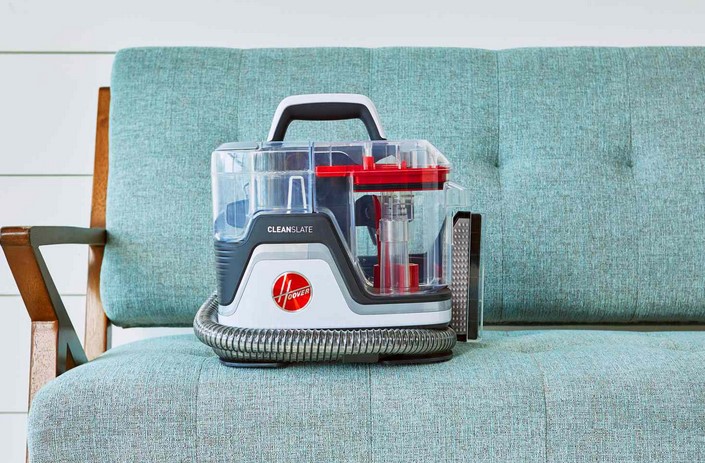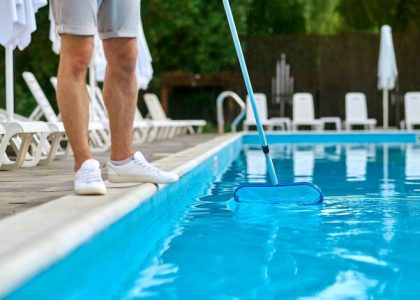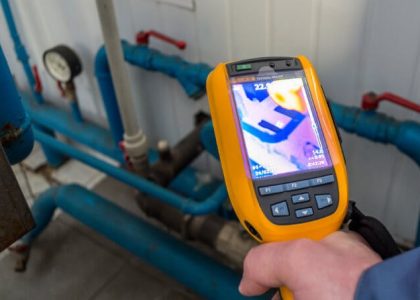
Furniture, especially upholstered pieces, plays a central role in defining the comfort and aesthetic of a room. However, the fabric on your couches, chairs, and cushions can quickly accumulate dirt, dust, and stains over time. While professional upholstery cleaning services are an option, many homeowners prefer to handle the task themselves using the right upholstery cleaning tools. These tools allow you to maintain your furniture in pristine condition, ensuring it stays looking new for longer without the hefty price tag. In this article, we’ll explore a variety of upholstery cleaning tools that can help you achieve spotless, refreshed furniture, all while keeping it hygienic and odor-free.
Why Upholstery Cleaning Matters
Upholstered furniture often gets a lot of use, and over time, it becomes prone to stains, odors, and dirt buildup. If left untreated, these elements can degrade the fabric, leading to a worn-out appearance and, in some cases, potential health issues due to allergens and bacteria. Regular cleaning helps to extend the life of your furniture, keeping it free from dust mites, pet dander, and other allergens.
Moreover, upholstery cleaning can maintain the aesthetic of your living spaces. Stains, dirt, and spills can mar the beauty of even the most expensive furniture, making it seem old or neglected. By investing in good-quality upholstery cleaning tools, you can restore your furniture and ensure it remains a welcoming and comfortable part of your home.
Types of Upholstery Cleaning Tools
There is a wide range of upholstery cleaning tools available on the market, each designed to tackle specific types of dirt or stains. Let’s dive into some of the most popular and effective tools for upholstery cleaning.
1. Vacuum Cleaners with Upholstery Attachments
One of the simplest yet most effective tools for cleaning upholstery is a vacuum cleaner equipped with an upholstery attachment. Regular vacuuming removes loose dirt, dust, and debris that can accumulate in the fabric over time. Many vacuums come with specialized attachments, such as a brush or upholstery nozzle, designed to work on fabric surfaces without damaging them.
Using a vacuum cleaner to clean your upholstery regularly can help maintain the freshness of your furniture and prevent dirt from sinking deeper into the fibers. The upholstery attachment typically includes a soft bristle brush that lifts dirt and dust from the surface, making it easier to suck up with the vacuum. For best results, vacuum your furniture at least once a week, paying attention to areas that see more use, such as seat cushions and armrests.
2. Steam Cleaners for Deep Cleaning
For a deeper, more thorough cleaning, a steam cleaner is a highly effective option. Steam cleaning works by releasing hot steam onto the upholstery, which penetrates the fabric fibers to loosen dirt, grime, and even bacteria. The combination of heat and moisture helps break down stubborn stains and refreshes the fabric, leaving it sanitized and looking like new.
Steam cleaners are excellent for tackling tough stains or odors that regular cleaning methods may not fully address. They’re also ideal for homes with pets or children, as they can help eliminate germs and allergens from upholstery. Many steam cleaners come with various attachments designed for different surfaces, including a specialized upholstery tool that can be used on furniture.
When using a steam cleaner, always follow the manufacturer’s instructions, as too much heat or moisture can damage certain fabrics. It’s also important to ensure the furniture is thoroughly dried after steam cleaning to avoid any potential mildew or mold buildup.
3. Upholstery Brushes and Stiff Brushes
An upholstery brush is a handy tool for lifting dirt, hair, and lint from fabric furniture. These brushes typically have stiff bristles that can penetrate deep into the fibers to loosen and remove debris without damaging the material. Upholstery brushes are great for cleaning areas like cushions, armrests, and seams where dirt tends to collect.
There are also specific brushes designed for delicate fabrics, such as velvet or suede. These brushes are gentler on the material but still effective at removing dirt and restoring the furniture’s appearance. When brushing upholstery, be sure to brush in the direction of the fabric fibers to avoid causing any fraying or damage.
For tougher dirt or stains, you can use a stiff brush to agitate the surface more aggressively. However, always test the brush on a small, inconspicuous area first to ensure it won’t damage the fabric.
4. Upholstery Cleaning Sprays and Stain Removers
For more stubborn stains, upholstery cleaning sprays and stain removers can be a game-changer. These products are formulated to break down and lift stains from fabrics, whether they’re caused by food, wine, or pet accidents. Most upholstery cleaning sprays come with a nozzle that allows for precise application, targeting the stained areas directly.
Many cleaning sprays also have antibacterial properties, which help to sanitize the fabric and eliminate odors. Some sprays are even designed to work without the need for additional scrubbing, making them a convenient option for quick touch-ups. For more persistent stains, you can use a combination of upholstery cleaning sprays and a brush or cloth to work the solution into the fabric.
When using a cleaning spray, always follow the product instructions and test it on a small area first to ensure the fabric won’t be damaged. Some fabrics may react poorly to certain chemicals, so it’s essential to choose a product that’s safe for the type of upholstery you’re cleaning.
5. Portable Spot Cleaners
For targeted cleaning of small stains and spills, a portable spot cleaner can be a valuable addition to your cleaning arsenal. These handheld devices are designed to spray cleaning solution onto the fabric and simultaneously vacuum up dirt and moisture. Portable spot cleaners are perfect for addressing individual stains, such as coffee spills, pet accidents, or food stains, without needing to clean the entire piece of furniture.
Many spot cleaners use a combination of suction and shampooing to ensure deep cleaning without soaking the fabric. The compact size and ease of use make these tools perfect for quick cleanups, especially for homes with pets or children.
Tips for Effective Upholstery Cleaning
Using the right upholstery cleaning tools is only part of the equation. To achieve the best results, here are a few additional tips:
- Test Cleaning Products First: Always test any cleaning solution or spray on an inconspicuous area of your furniture before applying it to a visible area. This helps you avoid damage or discoloration.
- Vacuum Regularly: Regular vacuuming is essential for keeping your upholstery looking its best. Aim to vacuum your furniture at least once a week, especially in high-traffic areas.
- Act Quickly on Spills: The faster you address a spill or stain, the easier it will be to clean. Blot (don’t rub) the stain immediately to absorb as much liquid as possible before using a cleaning solution.
- Dry Thoroughly: After cleaning, allow your upholstery to dry completely. Leaving damp fabric can lead to mildew and mold growth, which can cause further damage to the furniture.
Upholstered furniture is a significant investment in your home’s comfort and style. To keep your furniture looking fresh and spotless, it’s essential to use the right upholstery cleaning tools. Whether you choose a vacuum cleaner, steam cleaner, upholstery brush, or portable spot cleaner, these tools help ensure that your furniture remains clean, hygienic, and aesthetically pleasing. Regular cleaning not only prolongs the life of your furniture but also enhances the overall atmosphere of your living space. By incorporating the right tools and techniques into your cleaning routine, you can maintain your upholstery in perfect condition and create a welcoming environment for years to come.


